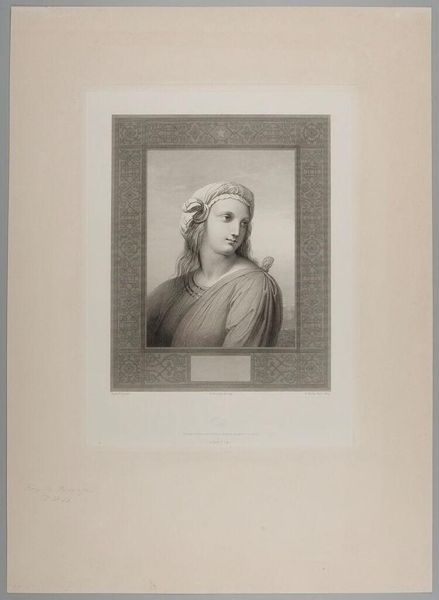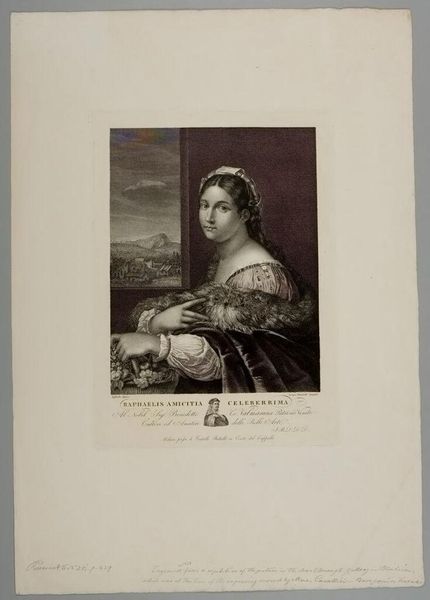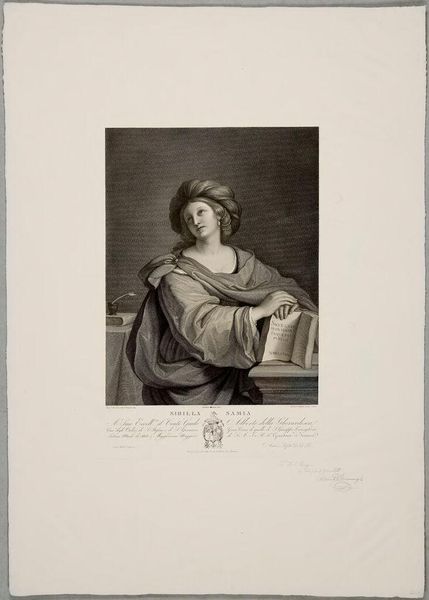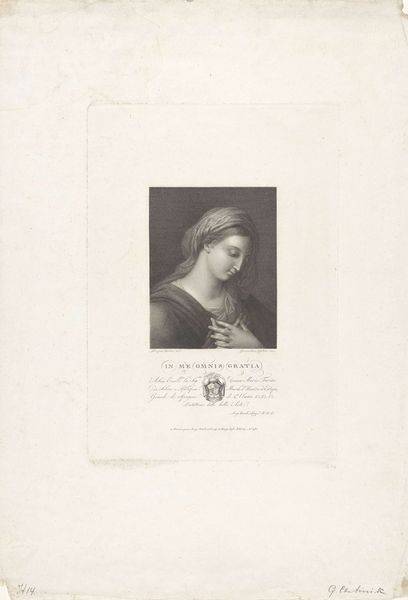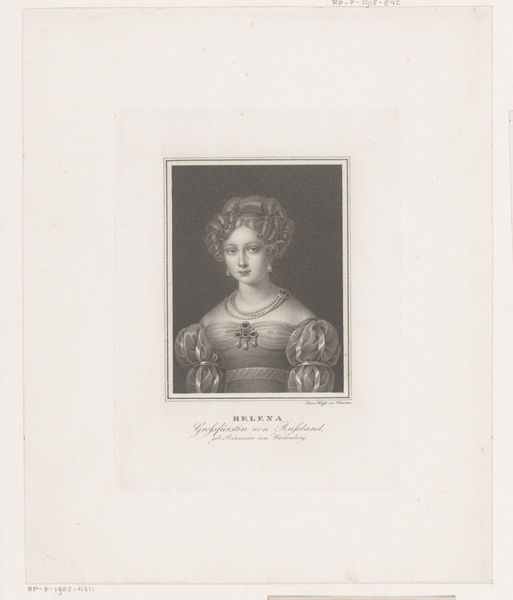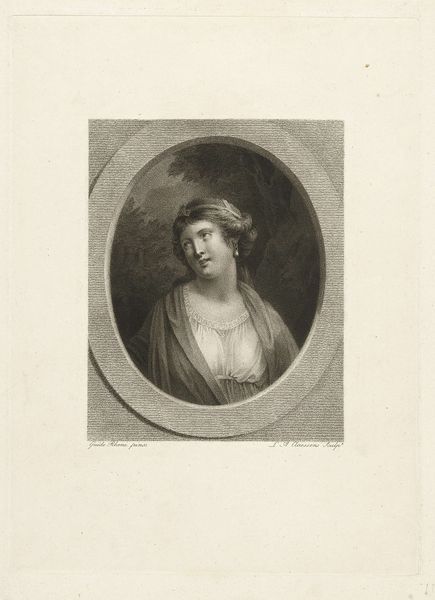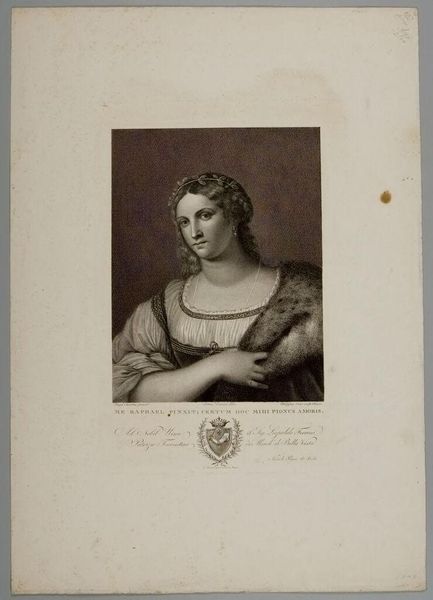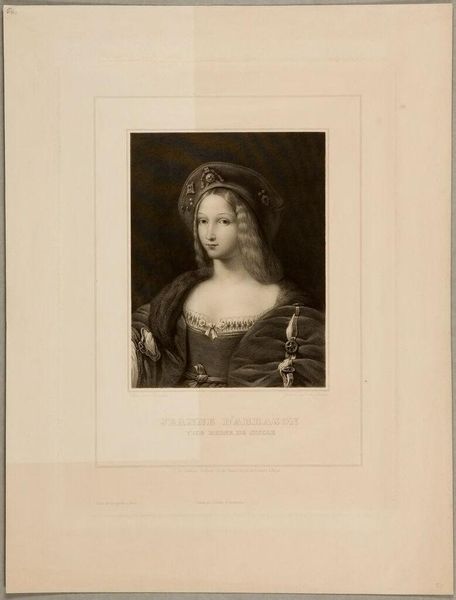
Copyright: CC0 1.0
Editor: This is Antonio Ricciani's "Magdalene." It’s quite striking. She looks serene, almost stoic. What can you tell me about its cultural context? Curator: Ricciani, active in the early 19th century, created this print in a time of intense religious and political upheaval. The image of Magdalene, often associated with repentance, held particular significance in post-revolutionary societies seeking moral guidance. The church and its role in social order had been challenged. Editor: So, the print served a purpose beyond aesthetics? Curator: Absolutely. Images like these helped re-establish traditional values, subtly influencing public perception and reinforcing societal norms through widely accessible visual media. What do you make of her gaze? Editor: It’s direct, engaging, but not confrontational. I understand that prints at the time were used to influence a large audience, so its accessibility made it influential to public perceptions of virtue. Curator: Precisely. We can think about how this print reinforced the church’s and the upper class’s influence in society.
Comments
No comments
Be the first to comment and join the conversation on the ultimate creative platform.



